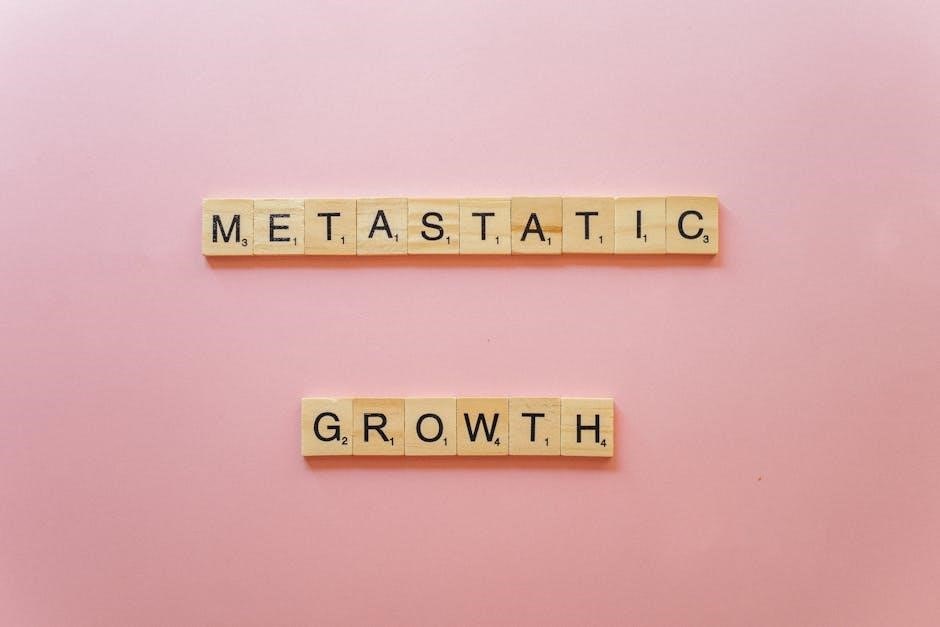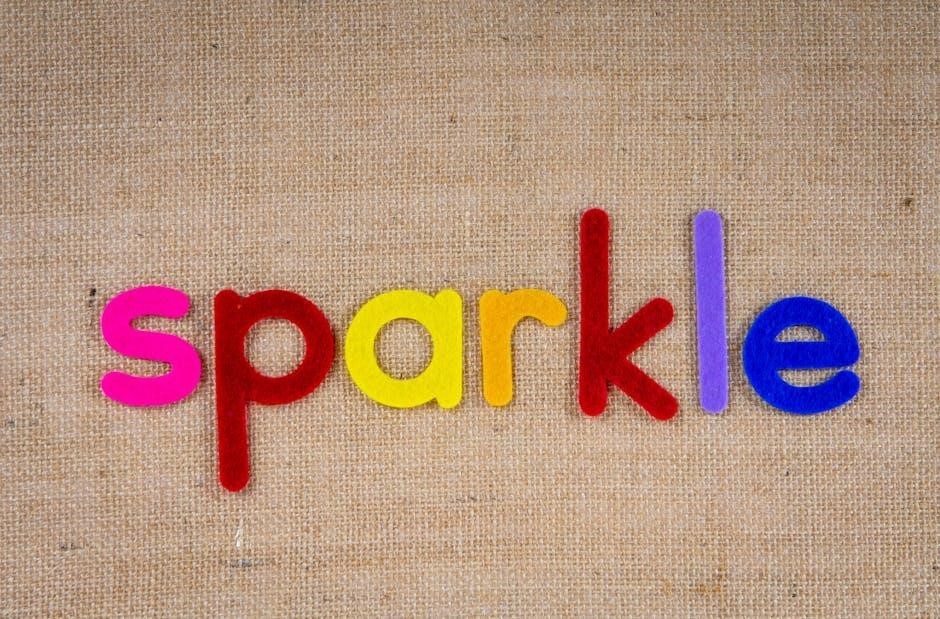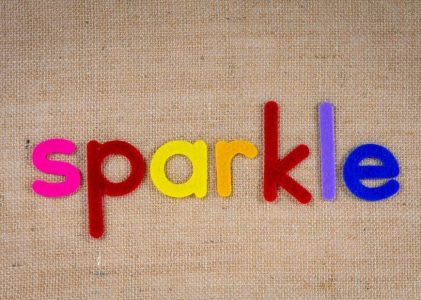A sign language alphabet PDF is a visual guide featuring handshapes for each letter, enabling effective communication with the deaf community․ These portable resources are ideal for learning ASL or other sign languages, offering clear illustrations and accessibility for all learners․

1․1 What is the Sign Language Alphabet?
The sign language alphabet, often referred to as the manual alphabet, is a system of handshapes and gestures used to represent the letters of the English alphabet and numbers․ It is a fundamental tool for communication in sign languages, enabling individuals to spell out words and phrases when direct signs are not available or understood․
Each letter or number is associated with a unique handshape or movement, creating a visual representation of the written language․ This system is widely used in educational settings, such as in classrooms for deaf or hard-of-hearing students, and is an essential skill for anyone learning sign language․
The sign language alphabet is not a language itself but rather a bridge between written and visual communication․ It allows for clarity in situations where spoken language may not be accessible, fostering inclusivity and understanding between hearing and deaf communities․
By mastering the sign language alphabet, individuals can communicate more effectively and respectfully with those who rely on sign language as their primary means of expression․

Benefits of Learning the Sign Language Alphabet
Learning the sign language alphabet enhances communication, fosters inclusivity, and empowers individuals to connect with the deaf community․ It promotes understanding, breaks barriers, and enriches cultural awareness․ This skill is invaluable for educators, caregivers, and anyone seeking to improve accessibility and inclusivity in their interactions․
2․1 Educational Value

The sign language alphabet holds immense educational value, serving as a powerful tool for learning and inclusion․ By mastering the sign language alphabet, individuals can gain a deeper understanding of linguistic structures and cognitive development․ It enhances memory and hand-eye coordination, as learners must remember and replicate precise handshapes and movements․ Additionally, it fosters empathy and cultural awareness, encouraging students to appreciate diverse communication methods․ Educators can integrate sign language into curricula, creating engaging and interactive lessons that cater to visual and kinesthetic learners․ This approach not only enriches classroom environments but also promotes accessibility, ensuring that deaf or hard-of-hearing students feel represented and valued․ The educational value extends beyond language acquisition, nurturing creativity and teamwork through collaborative learning activities․ Furthermore, the portability of sign language alphabet PDFs allows students to practice anywhere, reinforcing their skills consistently․ Overall, incorporating the sign language alphabet into education empowers learners of all abilities, fostering a more inclusive and enriching academic experience․
2․2 Enhanced Communication Skills
Mastering the sign language alphabet significantly enhances communication skills, bridging the gap between hearing and deaf communities․ By learning the manual alphabet, individuals can convey messages accurately and confidently, fostering clearer connections․ The ability to spell words and phrases in sign language improves dexterity and coordination, which are essential for effective communication․ This skill also encourages patience and attentiveness, as both parties must focus on each other to understand the message fully․ Moreover, learning the sign language alphabet helps in understanding non-manual markers, such as facial expressions and body language, which are vital in sign language․ This holistic approach to communication empowers individuals to connect more deeply with others, breaking down language barriers and fostering inclusivity․ Whether in personal relationships, professional settings, or community interactions, the sign language alphabet serves as a valuable tool for enhancing communication skills and promoting understanding․ By practicing regularly with sign language alphabet PDFs, learners can refine their abilities and become more confident communicators in diverse situations․
2․3 Cultural Enrichment
Learning the sign language alphabet through PDF resources offers a profound opportunity for cultural enrichment․ Sign language is not just a method of communication but also a window into the rich culture of the Deaf and hard-of-hearing community․ By mastering the alphabet, individuals gain insight into the history, values, and traditions of this vibrant culture․ The process fosters a deeper appreciation for diversity and promotes inclusivity in society․ Additionally, understanding the sign language alphabet allows learners to engage with Deaf art, literature, and storytelling, which are deeply rooted in visual and gestural expression․ This exposure broadens one’s perspective and encourages empathy, helping to break down cultural barriers․ Furthermore, the ability to communicate in sign language strengthens connections with the Deaf community, enabling meaningful interactions and mutual respect․ In this way, learning the sign language alphabet becomes a powerful tool for cultural enrichment, bridging gaps and fostering a more inclusive world․ Through this journey, learners not only acquire a new skill but also gain a deeper understanding of the diverse cultures that shape our global society․
2․4 Accessibility for All

Sign language alphabet PDFs play a crucial role in ensuring accessibility for all individuals, regardless of their background or abilities․ These resources are designed to be inclusive, allowing people with hearing impairments, as well as those without, to learn and communicate effectively․ The widespread availability of PDFs means that anyone with access to a digital device can download and use these materials, breaking down barriers to learning․ This accessibility is particularly beneficial for educators, who can incorporate sign language into their curriculum, and for families wanting to communicate with Deaf or hard-of-hearing relatives․ Additionally, sign language alphabet PDFs often include visual aids, such as images or diagrams, which can help learners of all ages and skill levels understand the gestures more easily․ By providing a universal tool for learning, these PDFs promote equality and ensure that sign language education is not limited by geographical or financial constraints․ This accessibility fosters a more inclusive society, where communication is open to everyone, regardless of their circumstances․

The Importance of Sign Language Alphabet PDFs
Sign language alphabet PDFs are essential for accessible learning, offering convenience, visual clarity, and portability․ They bridge communication gaps, aid in education, and provide a universal tool for understanding sign language, fostering inclusivity and accessibility for all learners․
3․1 Portability and Convenience
Sign language alphabet PDFs offer unparalleled portability and convenience, making them an ideal resource for learners on the go․ These digital files are lightweight and can be easily stored on smartphones, tablets, or laptops, allowing users to access them anytime, anywhere․ Whether you’re commuting, in a classroom, or practicing at home, PDFs provide instant access to the sign language alphabet without the need for physical materials․ Their compact format ensures they take up minimal storage space, yet they remain visually clear and detailed․ Additionally, PDFs can be printed, giving users the flexibility to use them as physical study aids․ This convenience is especially beneficial for individuals who prefer hands-on learning or need to reference the alphabet frequently․ The portability of PDFs also makes them a great tool for teachers or instructors who need to share materials with students or colleagues․ Overall, the ease of access and mobility of sign language alphabet PDFs make them a vital resource for anyone looking to learn or teach sign language in a flexible and efficient manner․
3․2 Accessibility Features
Sign language alphabet PDFs are designed with accessibility in mind, ensuring that learners of all abilities can benefit from their content․ One of the key accessibility features of these PDFs is their zoom functionality, allowing users to enlarge images or text to a comfortable size for clearer viewing․ This is particularly helpful for individuals with visual impairments or those who need larger text for better comprehension․ Additionally, PDFs are compatible with screen readers, enabling users with visual or cognitive disabilities to navigate and understand the content effortlessly․ Many sign language alphabet PDFs also include high-contrast color options, reducing eye strain and improving readability for users with sensory sensitivities․ Furthermore, the digital format allows for easy sharing across devices, ensuring that individuals with mobility or dexterity challenges can access the material without physical barriers․ These accessibility features make sign language alphabet PDFs an inclusive and user-friendly tool for diverse learners, promoting equal opportunities for education and communication․
3․3 Customization Options

Sign language alphabet PDFs often come with customization options that allow users to tailor the content to their specific needs․ One common feature is the ability to edit or annotate the PDF, enabling learners to add personal notes or highlight important information․ This makes studying more interactive and personalized․ Additionally, many PDFs offer the option to select and print specific pages, allowing users to create a customized study guide that focuses on the letters or handshapes they find most challenging․ Some PDFs also include templates or blank charts where users can practice writing or drawing the sign language alphabet themselves․ Furthermore, certain PDFs may support language translation, making them accessible to learners who prefer studying in their native language․ These customization options enhance the learning experience by providing flexibility and adaptability, ensuring that the material can be adjusted to suit individual preferences and learning styles․ This level of personalization makes sign language alphabet PDFs a versatile tool for both beginners and advanced learners․

How to Learn the Sign Language Alphabet Using PDFs
Start by downloading a sign language alphabet PDF and organizing the material․ Practice regularly, focusing on one letter at a time․ Use the visual aids to master handshapes and movements․ Practice letter sequences and review mistakes to improve accuracy․ Consistency is key to fluency․
4․1 Step-by-Step Guide to Learning
Begin by downloading a sign language alphabet PDF and familiarizing yourself with its layout․ Start with the basics: handshapes, finger placement, and orientation․ Practice one letter at a time, ensuring accuracy in formation․ Use the visual guides to compare your handshapes and correct any mistakes․ Dedicate 10-15 minutes daily to practice consistency․ Gradually progress to letter combinations, such as spelling simple words․ Incorporate practice into daily routines, like spelling your name or common words․ Use a mirror to observe your handshapes and ensure clarity․ Track your progress by reviewing previously learned letters and identifying areas for improvement․ Apply the alphabet by spelling sentences or engaging in basic conversations․ Seek feedback from fluent signers to refine your technique․ Celebrate milestones, like mastering the entire alphabet or spelling complex words confidently․ Stay motivated by setting achievable goals and rewarding yourself for progress․ Consistency and patience are key to mastering the sign language alphabet using PDF resources․
4․2 Tips for Effective Practice
To maximize your learning experience with a sign language alphabet PDF, incorporate these practical tips into your daily routine:
- Set a Regular Schedule: Dedicate 10-15 minutes daily to practice, ensuring consistency and gradual progress․
- Use a Mirror: Observe your handshapes and finger placement to correct mistakes and improve accuracy․
- Break It Down: Focus on a few letters at a time, mastering each before moving on to the next․
- Practice in Context: Spell simple words or phrases to apply your knowledge and reinforce learning․
- Seek Feedback: Work with a partner or tutor to receive constructive criticism and refine your technique․
- Stay Relaxed: Keep your hands and arms relaxed to maintain proper form and avoid fatigue․
- Use Technology: Supplement your PDF with video tutorials or apps to see signs in motion․

By following these tips, you can make your practice sessions more productive and enjoyable, ensuring steady improvement in mastering the sign language alphabet․

Sign Language Alphabet PDF Resources
Discover reliable sources offering free or premium sign language alphabet PDFs․ Official sign language websites, educational platforms, and community forums provide downloadable charts․ Explore ASL University, Signing Savvy, or local deaf organizations for high-quality resources․ Many PDFs are also available on Google Drive or Dropbox․
5․1 Free Printable Charts
Free printable sign language alphabet charts are an excellent resource for learners․ These charts typically include visuals of handshapes for each letter, making them easy to understand․ Many websites offer downloadable PDFs designed for printing at home or in classrooms․ Popular sources include ASL University, Signing Savvy, and LifePrint, which provide high-quality, letter-sized charts․ Some charts are color-coded or include additional features like finger placement guides․ Others offer a poster-sized layout for better visibility in group settings․ These free resources are ideal for beginners, educators, and families․ They can be used as flashcards, wall decorations, or study aids․ Customizable charts are also available, allowing users to print only specific letters or create personalized practice materials․ Additionally, some charts include tips for proper hand positioning and common mistakes to avoid․ Printable charts are a cost-effective and accessible way to learn the sign language alphabet․ They are widely used in schools, libraries, and community centers․ For those looking to practice regularly, laminating the charts can extend their durability․ Overall, free printable charts are a valuable tool for anyone interested in mastering sign language․

